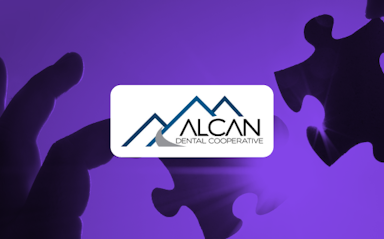Optimizing Dental EHR To Streamline Your Practice Workflows Efficiently
Dental providers have been very slow in adopting electronic health records (EHRs) within their practices, unlike their peers in other areas of medicine. According to NCBI, “adoption rates of patient portals among dental practices in the United States were low. Top barriers to adoption of dental EHRs identified included cost/expense of EHRs, cost-benefit ratio, time to convert from paper-based to computer-based practice, and poor usability of current EHRs.”
With 48% of dental providers not yet moving to EHRs, many still utilize paper clinical charts. These clinical charts are organized chronologically as the patients are treated and followed up. This database system can become cumbersome as the patient data grows over time, with more elements to be researched before considering the patient’s care.
Often, the data has to be re-entered multiple times to update all the necessary health records of the patients to be included. Storing patients' data on paper also poses high risks of losing or damaging them. Because once lost or damaged, it would be tiring and time-consuming to recollect the data, re-record, and reorganize it.
Therefore, adopting a system that would allow your patient data to be recorded digitally could help improve patient experience and speed of care delivery.
What is an EHR?
“An Electronic Health Record is often defined as a complete longitudinal history of an individual’s health care across all settings and encounters as well as the data types and relationships that would enable it to be created, stored, and managed electronically.”
Source: ADA
Precise and comprehensive clinical records of a patient that EHRs provide have the potential to benefit your dental practice in various ways:
Allows effective communication between dental care providers
Enhances the quality of care assessments
Provides a database for dental research
Aid in the rejection of malpractice claims
Optimize the safety & effectiveness of patient care
Despite these unique features, EHR extends to dental practices, and many might not be lending themselves to EHR adoption due to the lack of time to convert from paper-based to computer-based practices. However, the number of providers adopting dental EHR is growing as they increasingly seek EHRs to improve their practice efficiency.
Why adopting EHR in dental practices is necessary
According to ADA, EHR systems can improve care quality and patient safety by enhancing the quantity and quality of information available to providers for decision-making. An EHR system’s ability to capture detailed clinical data in a highly structured manner can enable analysis for quality assessment, identification of areas for improvement, and the design of decision support tools like allergy alerts, medication alerts, and other prompts.
For several factors, EHR adoption is beneficial to all healthcare providers, including dental providers. Two main factors are the correlation between oral and medical health and the benefits the right organization of patient medical history brings in providing efficient and reliable treatment. Enhancing the quality of treatment and increasing the number of patients treated using EHR digital documents assists in patient care and the overall optimization of dental practice systems.
1. Oral and Medical Health are Correlated
The first symptom of larger health issues such as systemic disorders, general illnesses, or dietary deficiencies might be oral problems. With the dental and medical disciplines divided, there is a high chance of patient information getting improperly transferred between the disciplines.
Reliance on paper copies of medical records and the recollection of medical history by patients can lead to inconsistencies between the disciplines, inhibiting the efficient management of patient needs. This results in an uncoordinated organization between oral and medical health and the storage of patient health information.
2. Allow for more precise and efficient care
Your patients might have different dental needs and medications and visit multiple dental providers concurrently. Getting in contact with their providers and drawing inferences from written clinical charts will not allow for a precise treatment decision on time.
Relying on EHR for quick access to patient data and previous medical history ensures your patient timely and accurate access to quality dental care. By understanding a patient’s relevant medical history, present medical needs, and medications used, you can relate to the patient’s overall health experience and can optimize the care they receive.
Benefits of Dental EHR Integration
EHRs and the ability to exchange health information electronically can help you provide higher quality and safer care for patients while creating tangible enhancements for your organization.
Source: HealthIT

Electronic Health Records system provides comprehensive patient-centric care by organizing patient information across multi-site practices, enhancing treatment reporting, and improving care management, ultimately leading to greater productivity and increased patient satisfaction. EHRs also:
1. Improves data organization
Integrating a dental EHR into your practice workflow allows it to increase the accuracy of organizing patient information and documentation. EHRs can also help to manage the scheduling of providers, patients, and resource management tasks by importing and displaying relevant information obtained from another dental provider, primary care physician, or other health care professional.
The ability to search for a specific piece or a full range of patient information in a timely manner relaxes the time it would take to hunt through paper documents. This ensures that the patient can be taken care of with their comprehensive medical history in hand.
2. Retrieves patient information quickly
Since it is the duty of healthcare providers to be completely aware of the patient’s health status, it is important for dental practices to quickly and easily obtain the details. The ability to feed in existing medical conditions, current prescriptions, treatments undergone, etc., within EHRs, helps better organize patient information. This can also be leveraged to provide treatment recommendations taking into account the potential side effects and complications for respective patients.
Without a properly organized digital solution, it would be difficult to go through each patient’s entire medical history to come to a fully optimized course of action. EHRs are thereby allowing patient care to become even better.
3. Cut overheads to save revenue
An EHR system will help you to save money by cutting expenses on unnecessary paper-based data management, and team burnout, along with assisting you in the timely submission of dental claims. You can also use an EHR system to prescribe medication and record billing fees for each consultation separately. With the increased efficiency provided by an EHR system, you can possibly consult more patients per day, creating more revenue for your dental practice.
However, these significant benefits of EHR are hampered by these critical issues:
Lack of universally accepted documentation standards
Inaccurate record-keeping practices
Unfriendly EHR user interfaces
Lack of consistent access to patient records
With the incorporation of “next-generation” functionalities that can be used efficiently by both single-location and multi-site practices, CareStack shows its commitment by successfully solving these critical issues to being one of the leaders in dental software innovation.
Curious to know more about how we are leveraging EHR to help practices get the most out of the system, watch out for our next blog in the series. If you are ready to try it now, sign up for a demo and learn how to scale up your practice with our exclusive functionalities.





